Golden Globe: Calamity at Cape Horn
Published on March 23rd, 2023
(March 23, 2023) – Way before the start of the Golden Globe Race in Les Sables d’Olonne, the last stretch to Cape Horn was always a concern for Ian Herbert-Jones (GBR)
It became more of a worry for him in the South Atlantic when the Shropshire sailor thought of skipping the Cape Town film drop altogether to save time and make the January 31 Hobart gate cut off date. Miss that gate and you must stop, as you are considered too late to round Cape Horn before early spring storms.
Herbert-Jones just made Hobart by a few days, but later while heading east and a slow exit of the Tasman Sea, the weather conspired against him north of the Pacific exclusion zone, increasing his concerns about paying the price for a late rounding of Cape Horn.… and so it was!
Sailing for several days in what he described in his weekly satellite safety call as ‘biblical conditions’, he faced his worst fears: Extreme winds well over 60 knots, heavy and confused breaking seas, several knock downs with his hydrovane struggling to cope.
He nevertheless carried on, displaying his signature vulnerability, humility, humor and determination to get the job done. But on March 22 at 0400 UTC, Herbert-Jones called the Race Office to advise that the conditions were crazy, screaming wind speeds impossible to determine (Chilean Navy forecast possible gusts to 90 knots) and 7-metre seas.
Sailing under bare poles, he was struggling to deploy his drogue which was now a tangled mess in the cockpit. One hour later, he had deployed the drogue and unfurled a small amount of staysail as the wind was finally abating.
However, at 1100 UTC he called back, sounding stressed, declaring a ‘PAN PAN’ and requesting GGR to notify MRCC of his situation, though NOT requiring assistance. He was unsure of his position and his hydrovane had another issue and was no longer working but in the dark he could not see why and it was dangerous hanging over the back.
GGR was providing weather updates and monitoring his track which was headed for the Diego Ramirez Islands. Sailing at only three knots under the drogue in seven metre seas, the bottom rapidly rose from 1,500 metres to just 100 metres in a few miles, causing some concern in Race Control. He reported serious waves slamming into the back of his Tradewind 35 PUFFIN.
He passed 2.5 miles north of the islands as conditions slowly moderated and daylight returned, but then rang a third time at 1810 UTC to advise that his drogue warp at some time had wrapped around the Hydrovane rudder whilst sailing slow in the big seas. It caused the initial damage and eventually the rudder snapped in half.
He could not fit his emergency electric autopilot as it steered through the Hydrovane rudder and it was too rough to fit his Hydrovane spare rudder. He was hand-steering to Cape Horn and beyond. He cannot do that for 6,000 miles back to Les Sables d’Olonne.
He is now headed for Puerto Williams about 150 miles away to effect repairs. He has been officially moved into Chichester Class (no longer in the rankings for the solo non-stop GGR) giving him full use of his safety GPS and sat phone to organise the stopover logistics.
Herbert-Jones is safe, in control and did not require assistance. The ‘Code Orange’ which alerts the Chilean Rescue Coordination Centre of a difficult situation, was cancelled on March 22 at 2200 UTC.
Despite the recent concerns about hiss safety, there certainly is a sense a relief in the Race Office after an eventful southern oceans crossing, starting with Tapio Lethinen’s (FIN) rescue in late November and the various entrants knock-downs between the Pacific exclusion zone and the Horn, and a 2,000-mile detour to Chile for Simon Curwen (GBR).
There has, however, been significantly less damage and loss of boats compared to the 2018 GGR. The new start date of September 4 from Les Sables d’Olonne, two months later than in 2018, put the sailors in the south two months later, experiencing fewer and less violent storms. The long list of retirements this time is mostly a result of personal and technical issues rather than storms.
“I have to admit that I am really surprised at the number of retirements,” said Don McIntyre, GGR Founder and Race Chairman. “I was hoping half would finish! The GGR is a tough challenge unique in the world of sport. Nothing compares. It is extreme at the human, technical and psychological level and that is reflected in the results so far. Sixteen sailors chasing a dream and only three left in the game!”
Up front, it’s getting really close as the fleet reels in leader Kirsten Neuschäfer (RSA). “We have always said that Kirsten needed to build a big gap in the Southern Ocean where Minnehaha’s power makes for incredible daily distances,” said McIntyre.
“Despite a 650-mile gap in the southern Atlantic that made a come-back from Abhilash Tomy (IND) seem doubtful at the time, here we are! The two leaders are now battling it out in the doldrums, with less than 300 miles difference between the nimble Rustler Bayanat and the heavier Minnehaha.”
Neuschäfer and Tomy have not talked on the HF radio for weeks and Neuschäfer, unaware of his position, is chasing an imaginary leader. She is quite despondent and thinks she has made too many mistakes which she shared on her weekly call, while in reality she has been leading for the last month.
All is well on his Rustler 36 Bayanat, and Tomy thoroughly enjoys his uneventful sailing as he shared in his weekly call. He is busy sailing, collected another 100 liters of water, topping all tanks on Bayanat, and finally has leisure time, namely French literature and a (long) tale of revenge: The Count of Monte-Cristo!
“I haven’t found the trades at all ever since I’ve been in that high, with the wind coming from all directions but saw nothing consistent with a south easterly trade that’s for sure,” Neuschäfer reports. “It’s pretty hot in here, especially when there’s no wind, and it’s been raining all day which is a bit unusual. I probably haven’t been east enough, but I don’t know since I have zero weather information. If I wasn’t in a race I wouldn’t be frustrated, but I am racing.”
Both sailors now have equal weather information: Tomy has no weather fax installed and does not receive Peter Mott’s New Zealand HF weather forecast, while Neuschäfer recently stopped receiving faxes from Chile and Passage Guardians bulletins relays. Tomy decided to sail the shorter course, relying on coastal traffic for weather information, while Neuschäfer is taking an option 550 miles to the east of him based on historical data.
Both boats were involved in the Tapio Lehtinen (FIN) rescue four months ago, and received time and/or fuel compensation to be calculated after docking in Les Sables d’Olonne. Tomy was awarded a 12-hour compensation for diverting course before being relieved from the rescue effort by the GGR Crisis Management Team and MRCC Cape Town.
However, he has lost some diesel through a leak and will be penalized 2 hours for any liter over the 25-litre allowance. Kirsten has been awarded a 35-hour compensation for her rescue and transfer aboard the M.V. Darya Gayatri and a 30-litre fuel allowance for engine use. Every liter of fuel consumed gives the entrant a 2 hour time penalty.
Event details – Entry list – Tracker – Facebook
Credit for helping with rescue of Tapio Lehtinen:
• Kirsten Neuschäfer: 35 hours + 30 litres of fuel
• Abhilash Tomy: 12hrs
2022 GGR Class:
1. Kirsten Neuschäfer (39) / South Africa / Cape George 36 – “MINNEHAHA”
2. Abhilash Tomy (43) / India / Rustler 36 – “BAYANAT”
3. Michael Guggenberger (44) / Austria / Biscay 36 – “NURI”
2022 GGR Chichester Class:*
1. Simon Curwen (63) / UK / Biscay 36 – “CLARA” (will stop to repair windvane)
2. Jeremy Bagshaw (59) / South Africa / OE32 – “OLLEANNA” (stopped in Hobart to clean hull)
3. Ian Herbert Jones (52) / UK / Tradewind 35 – “PUFFIN” (use of safety electronics for stopover logistics)
* Competitors shift to this class by making one stop.
Retired
Edward Walentynowicz (68) / Canada / Rustler 36 (dropped out, Sept. 8)
Guy deBoer (66) / USA / Tashiba 36 (ran aground, Sept. 16)
Mark Sinclair (63) / Australia / Lello 34 (retired in Lanzarote, Sept. 22)
Pat Lawless (66) / Ireland / Saga 36 (retired in Cape Town, Nov. 9)
Damien Guillou (39) / France / Rustler 36 (retired in Cape Town, Nov. 14)
Ertan Beskardes (60) / UK / Rustler 36 (retired in Cape Town, Nov. 16)
Tapio Lehtinen (64) / Finland / Gaia 36 Masthead sloop (sank off Cape Town, Nov. 18)
Arnaud Gaist (50) / France / BARBICAN 33 MKII-long keel version (retired near Saint Helena, Dec. 9)
Elliott Smith (27) / USA / Gale Force 34 (retired, Dec. 20)
Guy Waites (54) / UK / Tradewind 35 (stopped in Cape Town to clean/paint hull; retired in Hobart after losing his liferaft, Feb. 10)
About the 2022 Golden Globe Race
On September 4, 2022, the third edition of the Golden Globe Race started from Les Sables d’Olonne, France. Sixteen skippers will face eight months of isolation sailing 30,000 miles before finishing in Les Sables d’Olonne. Along the route there are several marks of the course and media requirements.
In 1968, while man was preparing to take his first steps on the moon, a mild mannered and modest young man was setting out on his own record breaking voyage of discovery. He had entered the original Golden Globe. Nine men started that first solo non-stop sailing race around the World. Only one finished. He was 29 year old Sir Robin Knox Johnston. History was made. Navigating only with a sextant, paper charts and an accurate and reliable time piece, Sir Robin navigated around the world.
In 2018, to celebrate 50 years since that first record breaking achievement, the Golden Globe Race was resurrected. It instantly gained traction with adventurers, captivated by the spirit and opportunity. Eighteen started with five finishers.
To embrace the original race, competitors must sail in production boats between 32 and 36 feet overall and designed prior to 1988 that have a full-length keel with rudder attached to their trailing edge. Additionally, sailors have limited communication equipment and can use only sextants, paper charts, wind up clocks, and cassette tapes for music.
Source: GGR




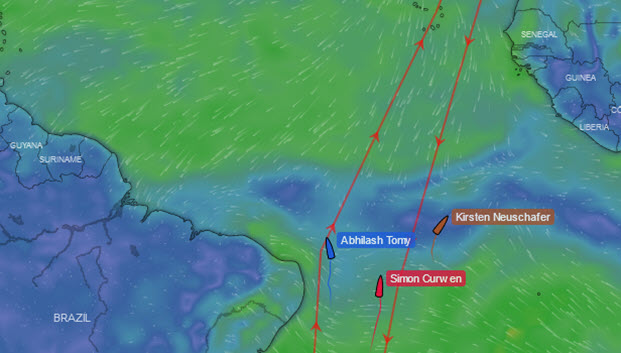

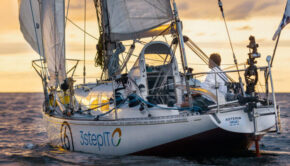
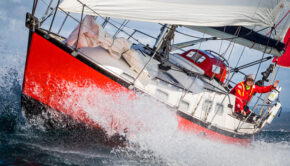
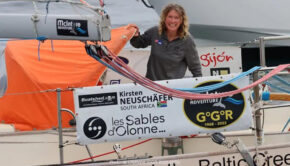
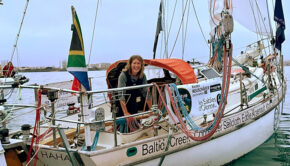
 We’ll keep your information safe.
We’ll keep your information safe.